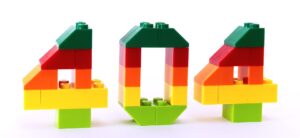Why Did My Google Discover Traffic Drop…and How Do I Fix It?

When you buy something through one of the links on our site, we may earn an affiliate commission.
Few things are more irritating then looking at your site and seeing the disappear overnight.
You work hard at your , after all. You churn out article after article on high-volume, high-value keywords, only to have relegate your site to page nine. What gives?
If you’ve analyzed your site and everything looks ship-shape, there might be one other culprit: .
What is ?
As a user, if you haven’t checked out yet, you’re definitely missing out. It’s only available as an app on mobile devices, but once it's downloaded, you’ll get a fully customized informational experience.
Emphasis on experience.
Since has so much information about you — search history, location data, preferences and more — it tries to pick out what you want to read. You’ll get news stories, blog articles, and even trailers customized on your feed.
And, like itself, the experience is virtually never-ending. Keep swiping and you’ll find article after article that you never knew you needed.
How Much Comes From ?
debuted in 2016 (under the name ), but it’s so relatively new you might’ve overlooked it. Savvy internet marketers have hopped all over it though, making it one of their greatest sources of .
Ahrefs, for instance, claims to have generated nearly 150,000 clicks from alone inside of six months. That’s more than some blogs receive in a lifetime.
For some bloggers, can count for a significant chunk of their . At least one website owner reported seeing a 70% drop in their overall due to a dip in.
Suffice it to say that if you experience a , it could cause you to hit the panic button.
Why Did My ?
The one thing that you need to know about is that considers it a part of their search business. That means any adjustment done to search at large affects Discover too.
With that in mind, there are several things to check if you experience a sudden drop in .
Core Updates
Since is mobile-based, any update to mobile devices can change how Discover operates.
This has happened at least once — when Android decided to update their security features in March of 2021. When that happened, millions of users were unable to sign into their feeds, causing to plummet.
More problems surfaced later when wifi networks were forgotten, or Discover just failed to show any articles whatsoever on people’s phones. Problems existed for weeks, creating headaches for both users and publishers.
Though these problems were rectified fairly quickly, it shows how much is at the mercy of adjacent systems. Anytime the platform — any platform, for that matter — updates its software, can be affected.
Low-Quality Website
Whether you're talking about or any other part of the ecosystem, quality matters. Your has to be on point, your pictures have to be optimized (and royalty-free), and you have to have genuine, worthwhile backlinks.
Needless to say, if the on your website is low-quality, you need an overhaul — whether your account takes a hit or not.
Some telltale signs of low quality on a webpage are:
- Little to no text in the main copy of a page.
- Incomplete, or run-on sentences.
- that was obviously generated by an AI robot (in other words, it doesn't read like it was written by an actual human)
- Copyright infringements.
- Outdated
- A page that reroutes you several times before landing at the right page.
- An unhealthy amount of ads.
- Any other red flag that makes you feel like the site is scammy.
Stay away from those, develop good that people actually want to read, and you should be able to recover your search rankings relatively quickly.
Policy Violations
In many ways, has let developers have a free hand in developing whatever they feel best suits their audience. Sometimes this results in some not so great floating around on the web, but overall, it fosters a creative environment that puts the searcher first.
Recently though, has rolled out a long list of policy violations that are specifically targeting their algorithm. Some of them revolve around best-use type practices; others are still allowed elsewhere on the web, but are now banned from .
- Sexually-Explicit
- Dangerous/Terroristic
- Misleading/Deceptive
- Violence/Gore and Profanity
While this list may seem surprising to some creators, the above represents what is usually found on mainstream news sites anyways. Since wants to collate a list of topics for a generalized audience, they tend to shy away from more adult-themed issues.
Perhaps one of the most surprising items on the list of manual actions targeted at is a ban on all medical and sites that lack transparency. If your site is dealing with news, for instance, the writer needs to be open and honest about their sources (and you'll want to follow these SEO for news publishers tips). If you've noticed a drop, you might start there.
How Can My Site Recover?
Depending on how much your website received from , recovering it can be high on your priority list. Fixing the above issues is a start, but there are also a variety of technical problems that need to be addressed.
Most digital marketers should have access to the tools that can perform the tasks below, but some of them can also be done manually. Your and accounts will come in really handy here.
Check for Crawl Errors
“Crawling” the website refers to any time tries to access your page. If it's unable to for whatever reason, you should see a list of crawl errors appear on your S page.
The most common crawl error for everyday websites occurs because of a failure to scan your robots.txt file. If it's not submitted, won't know how to read your site, and thus, won't even try.
Alternatively, if your robots.txt file limits certain pages from being crawled, then they won't be able to access those either. If those are the ones you want to rank inside of , you'll need to adjust accordingly. The same applies for any “no-index” errors you may receive as well.
Other crawl errors that might also pop up could be related to your DNS settings or the server itself. In some cases, these are temporary matters that should be handled within a couple hours, but check with your website developer to make sure.
If you've checked the above issues and you're still receiving a crawl error, check for possible URL errors. It may be that can't read your website on a mobile phone or that isn't reading your post correctly.
In the worst-case scenario, you could have a malware issue on your site. If that's the case, it needs to be fixed ASAP. Not only will your search drop, but the trust in your site from your readers will plummet as well.
Improve the Usability
As a rule, no page on your website should take more than three clicks to reach. If it does, your site may not be as accessible as you think.
Usability goes a long way in determining the SERPs, so before your site is ever created, you should consider its overall structure. Aesthetic issues like background color and font sizes are important, but so is the placement of images and text.
One thing that people don't tend to focus on when it comes to their website is readability. Typography is vital, and since information is accessible just about anywhere, if they can't read it on your side, they'll go somewhere else. Use bullet points, shorter paragraphs, and avoid the dreaded “wall of text.”
Perhaps the most important factor when it comes to usability is navigation. Simplicity reigns supreme here. Choose a layout that makes it as easy as possible for readers to scan your . The most important links should be front and center, and your call to action incredibly obvious.
And please, whatever you do, do away with anything that requires you to scroll horizontally. Just stop. Please.
Speed Up Your Site
Finally, we come to site speed.
Ask ten different digital marketers whether speed is important, and you'll get nine different responses. But speed matters on at least some level, even if it may not be as much some people think.
Unless you have an extremely devoted fan base, all webpages should load in under three seconds. Enormous images and a slow server can dampen this, so use a caching plugin when possible.
Although it's not completely necessary, consider using a delivery network, or CDN. This refers to a network of servers that are scattered all over the world, which allows your to be delivered faster. It may cost a little extra, but you should notice a substantial jump in speed.
Use sites like GTMetrix to test your website speed, or hire a professional to speed it up for you if necessary.
Google Discover Traffic Drop Conclusion
Contrary to some naysayers, the end of is not upon us. On the contrary, is streamlining their algorithm to allow only the best content to rise to the top. You want your to be in that group.
If you've never heard of before, consider it another tool in your toolbelt. Use it responsibly, and you can reach a whole new audience. Abuse it, and it'll drop you like a bad habit.
But even if you do lose it, it's not the end of the world. Adjust your site for best practices, and you should see your restored over time.
Want to learn step-by-step how I built my Niche Site Empire up to a full-time income?
Yes! I Love to Learn
Learn How I Built My Niche Site Empire to a Full-time Income
- How to Pick the Right Keywords at the START, and avoid the losers
- How to Scale and Outsource 90% of the Work, Allowing Your Empire to GROW Without You
- How to Build a Site That Gets REAL TRAFFIC FROM GOOGLE (every. single. day.)
- Subscribe to the Niche Pursuits Newsletter delivered with value 3X per week
My top recommendations





















